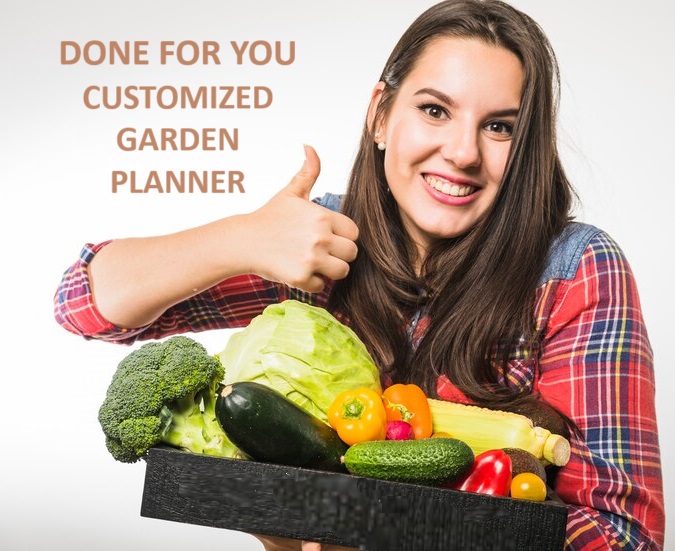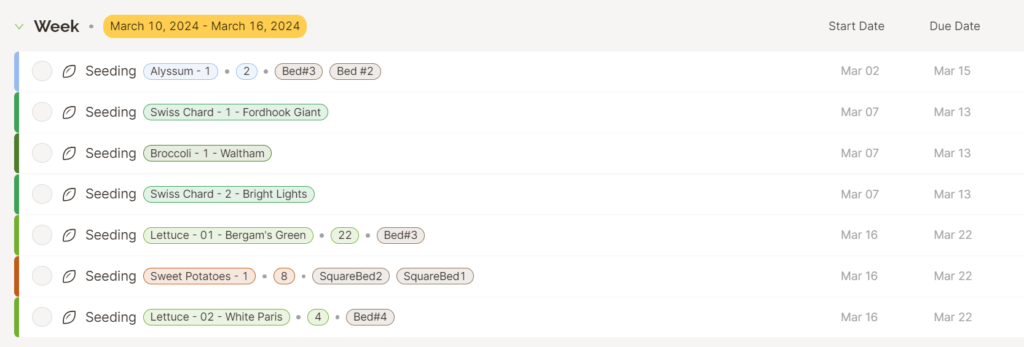Planning For Abundant Harvests
What is succession planting?
You probably would like to have food available throughout the year in your garden. This won’t happen if you plant everything all at once and don’t plant again. You’ll end up with too much all at once, and then at other times there won’t be anything.
Many gardens that aren’t properly planned out end up being a 4-week wonder, and then turn into a messy nightmare. You can avoid that with proper planning.
To get a continuous harvest, you’ll need to stagger your plantings. For example: plant a few lettuce seeds out, and two or three weeks later, plant a few more seeds. The first set of plants will not keep producing all season long. Eventually, they will mature, toughen, taste more bitter, and go to seed. With succession planting, you’ll be glad that you have younger plants with tender leaves to enjoy, and you can remove the older plants, making room to plant something else in its place.
How do you know what to plant when?
Some plants grow better in cooler temperatures and start to go to seed, or just don’t grow well in warm temperatures. There are others that need the heat to grow and won’t germinate, or they will be damaged by colder temperatures.
You can use this to your advantage by using the same garden space for growing more than one crop in a year.
When should my plants be ready go outside, and when will they be ready for harvest? What should take their place in the garden and still have time to finish growing before the fall frosts?
A planting calendar helps keep you on track. I can create a customized one for you, or you can create your own garden calendar.

- No time for planning and just want to get growing?
- I will design a layout and a customized calendar tailored to your needs
- You’ll also get a task list customized for your garden so that you know exactly when to plant what, and you’ll know when to harvest, when to fertilize and more.
- Get in touch with me TODAY and let’s get GROWING on your project!
There are some paid upgrades if you need to add custom crops or varieties, or multiple calenders, etc.
Disclaimer: This is an affiliate link, and as a SeedTime associate, I earn from qualifying purchases: but at no extra cost to you. So have fun with the free version, and if you need upgrades, please use my link!

You can grow even more food by extending the growing season: planting indoors to get a head start.
Cooler crops get planted out first, and then when they’re getting close to harvest, the young, warm-season plants get planted right in among them. By the time the warm season plants are getting larger, and the plants start to get a bit crowded, it’s time to harvest the cooler season plants and give the warm season plants some breathing space to keep growing.
Fall crops are done with the same idea, just in reverse. The baby cooler season plants get put out in the garden with the mature warm season plants near the end of summer or early fall.
When planning, remember to use a planting schedule that’s for YOUR local zone.
For a USDA zone 6 (fairly compatible with mine here in the Niagara area of Ontario), here are some ideas:
- Replant snow peas with carrots in July
- Fill spring onion bed with arugula in August
- Early beets replated with dill
- Harvest beets and replant the area with Asian greens in August, such as Pak choi, mustards, mizuna…
- After harvesting potatoes, replant with collards in July/ August
- Replant spring lettuce with turnip in August.
